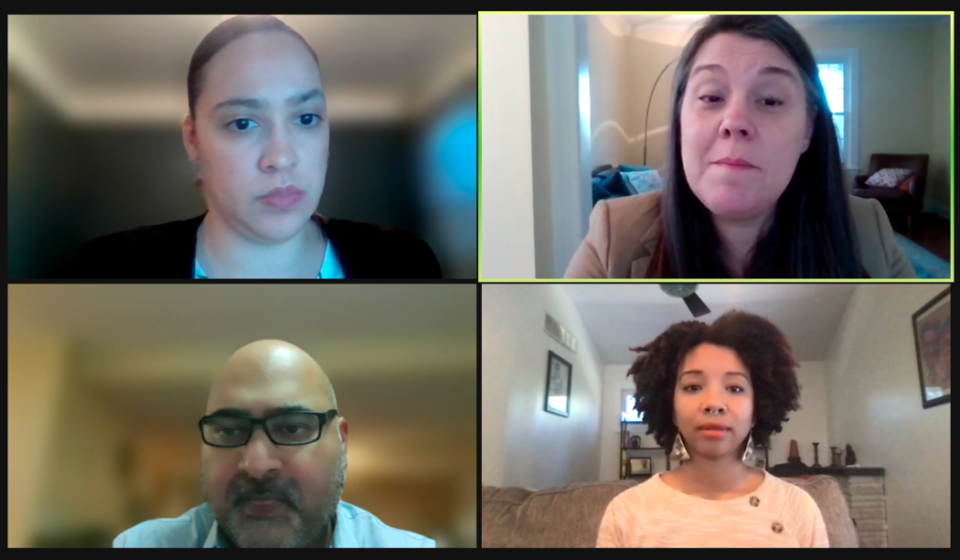A bipartisan committee tasked with establishing one new set of electoral maps for New York State has failed to do so, instead presenting two sets of opposing maps — one supported by the Republican committee members and the other by the Democratic members — that were both rejected by the state legislature this week.
At the center of the disagreement between the two partisan groups within the so-called Independent Redistricting Committee sits one Brooklyn neighborhood, Sunset Park, along with several other districts in the state.
Both Republicans and Democrats take issue at how the other has divided the district, which has resulted in insults being traded and consensus reaching an impasse.
Maps of proposed Congressional districts in Brooklyn
In 2021, the IRC had 16 meetings and a dozen public hearings across the state, according to Gothamist, and has, along the way, collected public input for what was supposed to end in consensus on one set of maps.
“Throughout this process, what has disappointed me most about my Republican colleagues is their seeming indifference to public input and an unwillingness to put pen to paper and modify their maps,” said Democrat David Imamura, who chairs the commission, Gothamist reports.
Meanwhile, IRC's Republican vice chair and a former state senator Jack Martins responded that Democrats had broken off talks during the commission’s final work meeting when the two sides had reached agreement on wide swaths of the maps.
“We didn’t reach agreement because one side turned their backs and walked away,” Martins said.
Maps of proposed State Senate districts in Brooklyn
Either way, the group has hit a wall.
The redistricting process will have huge implications on New York and the country's political landscape, as the state's allotment of congressional seats will decline this year from 27 to 26. That could impact the balance of power in the U.S. House of Representatives, and, once decided, those lines will be in place until 2032.
The IRC knows what is at stake, and also knows that if it fails to come up with one set of maps, the redistricting process will fall back to lawmakers, increasing the opportunities for gerrymandering.
The state Legislature has already, predictably, rejected the two sets of maps presented by the committee, which is now tasked with returning to the politicians with one agreed-upon set. If the politicians reject those maps, they will redraw the districts themselves. If that cannot be done before the end of next month, the courts could step in and take over the process.
Maps of proposed Assembly districts in Brooklyn
Meanwhile, three racial justice organizations, LatinoJustice PRLDEF, the Asian American Legal Defense and Education Fund (AALDEF) and the Center for Law and Social Justice at Medgar Evers College, have created their own set of maps and are urging the IRC to adopt them.
On Tuesday, the Unity Map Coalition held a press conference saying the IRC had failed New Yorkers "by proving themselves incapable of rising above partisan political squabbling to create a fair, nonpartisan redistricting plan."
"Of great consequence to communities of color, the dueling IRC redistricting plans submitted to and rejected by the New York State Legislature yesterday don’t reflect the voting strength of New York City’s Latino, Black, and Asian communities which form the backbone (and majority) of our City," the coalition said in a statement.
The Unity Map Coalition's proposed Congressional, State Senate and Assembly districts maps
The coalition added that the city's historically marginalized communities of color had for decades been "irreparably harmed by electoral districts and voting laws that were enacted with the intent of our exclusion and the diminution of our voting power," and now was the time to create maps that had equitable benefits for all New Yorkers.
CLSJ Executive Director Lurie Daniel Favors said at the press conference that the Unity Maps avoided all the flaws the IRC's inevitably partisan maps included, and the groups that drew the Unity Maps did so respecting community lines and needs, while also complying with the Voting Rights Act — something she said neither of the IRC's sets of maps did.
"We have the only set of maps that adhere to the spirit of the Voting Rights Act, preserving and maintaining communities of interest and with lower deviation in every metric."

She, along with representatives from the other racial justice groups, urged the IRC to adopt the Unity Maps in their entirety.
"They represent the floor," she said.
"If you can do better do it, but if you can't, we've set the floor. Our communities have borne the brunt of unfair redistricting — we need equity."




